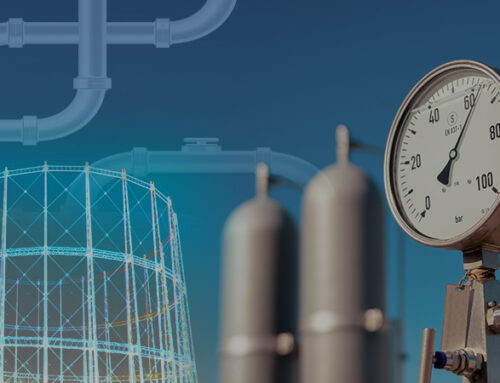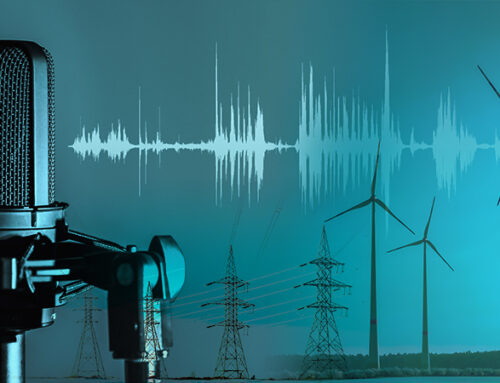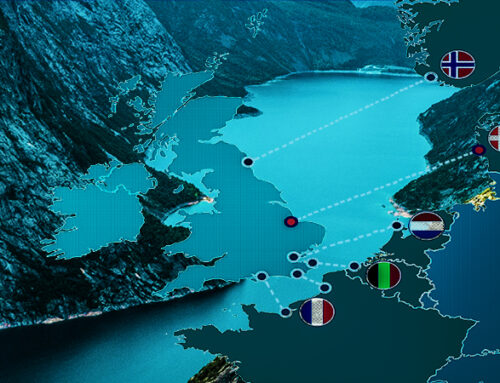Last month saw the launch of the UK Emissions Trading System (“UK ETS”), which replaces the EU equivalent which the country left at the beginning of the year with the implementation of Brexit. The first auctions on ICE took place on 19 May with the market price per tonne of carbon initially exceeding that in the EU regime.
Permits were sold at a price of £43.99 /tonne of CO2, climbing to just over £50 /tCO2 before falling back to around £45 /tCO2 later in the day. Trading in the EU ETS was €52.40 /tCO2 which was equivalent to £45.25 /tCO2. The scheme applies to all factories and power plants with a total rated thermal input of 20 MW or more.
“The first UK emissions auction clearing close to EU prices will bring a sigh of relief for industry and for policy makers. A smaller market and uncertainty about interventions to curb price spikes brought pre-auction worry that the permit prices would soar above those on the mainland and be volatile – potentially damaging the efficacy of carbon trading as a means of cutting carbon,”
– Jonathan Marshall, head of analysis at the Energy and Climate Intelligence Unit
After initially attracting a premium to the EU ETS, possibly while the pent-up demand from close to six months with no market was satisfied, prices are now converging. The question is whether prices will continue to track those in the EU ETS.
Under the current market rules, the Government must consider measures to reduce the cost of allowances via the Cost Containment Mechanism (“CCM”) if they consistently trade at more than double their average price of the previous two years – since we don’t yet have a two-year trading history, the Government has set a threshold of £44.74 /tCO2, (~€52 /tCO2), based on EU ETS prices between May 2019 and December 2020.

If the CCM is triggered, a meeting of the UK ETS Authority will be called to consider what intervention, if any, to make based on addressing sustained price movements that do not correspond to market fundamentals. If there is no agreement on what action to take, the final decision will be taken by HM Treasury. This potential interventions include:
- redistributing allowances between the current year’s auctions
- bringing forward auctioned allowances from future years to the current year
- drawing allowances from the market stability mechanism account
- auctioning up to 25% of the remaining allowances in the New Entrants Reserve
At the end of May, Carbon Pulse reported that another possibility, is under consideration. When the UK ETS was first being designed, the original regulation indicated that the maximum number of UK allowances that would be allocated for free would be 58 million, but this limit was subsequently reduced to 39 million, leaving a bank of around 19 million unused UKAs. These were set aside to be used in the event that allocations of free UKAs to industry exceeded the market cap – rather than applying a “cross-sectoral correction factor” (a reduction in each installation’s free allocation) these UKAs would be allocated instead.
More recently the Government has been considering whether to add this reserve to the 2021 auction reserve, in response to concerns that early UKA trading and its premium to EUAs might see the market exceed the CCM trigger price. But the recent convergence with the EU ETS reduces that risk, and for the first time the UK ETS closed below the CCM trigger level last night, settling at £44.50 /tCO2.
The multiplier will change from double the average price now, to 2.5 times the average price next year, and then to 3 times in 2023, which will be on a par with the EU ETS although the front-year price must be above that level for six months. This sliding scale allows the UK government to intervene in the market at an earlier stage, which may be necessary while the market becomes established.
At the other end of the price scale, the Carbon Price Floor is an additional tax which applies when the market price of allowances falls too low.
As the British market is much smaller than the EU market, now that the initial demand has been met, there are questions over market liquidity and price volatility, and how this will impact the trading strategies of companies needing to buy allowances.
“One thing that’s clear is that carbon prices are growing, and it’s a cost that impacts almost all businesses. For those looking to reduce their carbon emissions or become net-zero, there are technologies and services that can help. By taking the cost of carbon off the books altogether, firms can avoid the market and hedging bets on how high carbon prices will go,”
– Louis Burford, head of solution sales and optimisation at Centrica Business Solutions
After just one month of trading, it is difficult to draw any conclusions about the nascent UK ETS. While the Government clearly sees a role for carbon pricing, and a need to ensure prices are high enough to incentivise moves to cleaner technologies, it is also necessary to avoid economic shocks, particularly against the backdrop of a covid-depressed market.






I must confess to bewilderment at all these state interventions. Understanding the interventions has become a separate industry in itself. Someone always benefits! Why are they necessary? The idea of incorporating the external costs of carbon emissions into a company’s internal financial accounts (and therefore its decision-making) is supposed to reduce carbon emissions. Why then put a limit on the extent the price can rise? Is it just a simple matter of maintaining compettivenesss vis a vis EU firms – which is why the alignment of prices is desirable? But this defeats the object of internalising the price since the price is apparently manipulated by government. Or can be, at will.
Since carbon trading rules only apply to businesses with a “total rated thermal input of 20 MW or more”, surely many people can organise their businesses in units just under this ceiling and avoid the tax? .Just how many businesses actually pay this tax? Surely, it does not affect “almost all businesses” as Louis Burford claims. It appears to me to be an inducement to shift manufacturing capacity offshore (China?) which is hardly a policy desideratum.
Finally, what planet does Jonathon Marshall live on? He refers to the EU as the “mainland”, as if we were an offshore part of a huge European state. Someone should tell him we are now politically disconnected, and even when we were, the continent was never the mainland.
“competitiveness” !
Excellent points!
There is excessive state intervention in the energy markets – just about every form of electricity generation is eligible for or in receipt of some form of subsidy, so it’s difficult to call it a “market” at all. The arguments around carbon pricing are particularly confused – I don’t see the point of the UK ETS at all given there is already a carbon tax which could just be extended.
In terms of businesses re-organising themselves to avoid the cap…I think this would be difficult in practice, since you’d need to be able to separate out emitting assets or processes into genuine sub-20 MW chunks. A 400 MW turbine cannot be divided into 20 x 20 MWs. But there is a genuine off-shoring concern for manufacturing, as well as wider competition concerns which is why the Government is keen to keep prices within limits which approximate the behaviour of the EU ETS.
It’s all very messy and adds further complications to businesses that are also having to manage all the other regulatory, policy and market price risks coming their way in relation to energy.
It’s clear that soaring carbon prices are starting to be more in line with the sorts of levels that are needed to avoid explicit subsidies to at least some renewables to make them viable. We can expect prices to be manipulated higher to take the heat off some of the direct subsidies. Higher bills all round, of course.
I agree that carbon prices are ripe for manipulation, but I’m not sure it will all be one way. The Government has to balance the broader needs of the economy and avoid incentivising off-shoring. Headlines about high domestic carbon prices hurting British industry and increasing imports of higher-carbon electricity from the Continent would be very politically unpopular.
Given retail bills are already high and will continue to grow due to yet-to-expire subsidy payments, there is also the issue of hitting households twice at the same time…once with the amortisation of subsidy payments and then again with current carbon prices. There’s a reason the CPF has been stuck at the same level now for years…
As some of your other excellent posts have amply demonstrated net zero is going to be extremely expensive, and probably infeasible. The only way of making much progress will be a boiled frog strategy as far as I can see. There is of course a fond hope that other countries will shoot themselves in the feet at COP26. You do have to wonder how long it will be before it all starts to unravel.
My feeling is that it won’t be that long. There will be two drivers for change: pressure from business and pressure from voters/retail consumers. Once the “man on the street” starts having to change simple and relatively cheap gas for complicated and much more expensive electricity, the trouble will start. We’re already seeing it in transport with the growing revolt against LTNs and similar nonsense, and also the backlash against electric scooters.
The support for climate change prevention measures will fall sharply as people become increasing inconvenienced and have to pay more for less.
I see a strong parallel with the Brexit vote: policymakers pressed ahead with closer links with Europe through the 1990s and 2000s, despite knowing deep down the public wasn’t on really board. Once public support seemed stronger, and to resolve ongoing internal Conservative Party tensions, David Cameron decided to hold a referendum, and all of a sudden the public asserted it’s views. As it was so contrary to the ingrained biases of the political classes, the result was seen as an anomaly until the 2019 general election delivered a decisive result.
I think that policymakers are taking a similar position now with climate policies…pressing ahead while knowing that public support is probably going to be shaky once the full implications are known, so they consistently hide those implications until the need to marry actions with words forces it all out in the open. At which point the public will again make its feelings known…